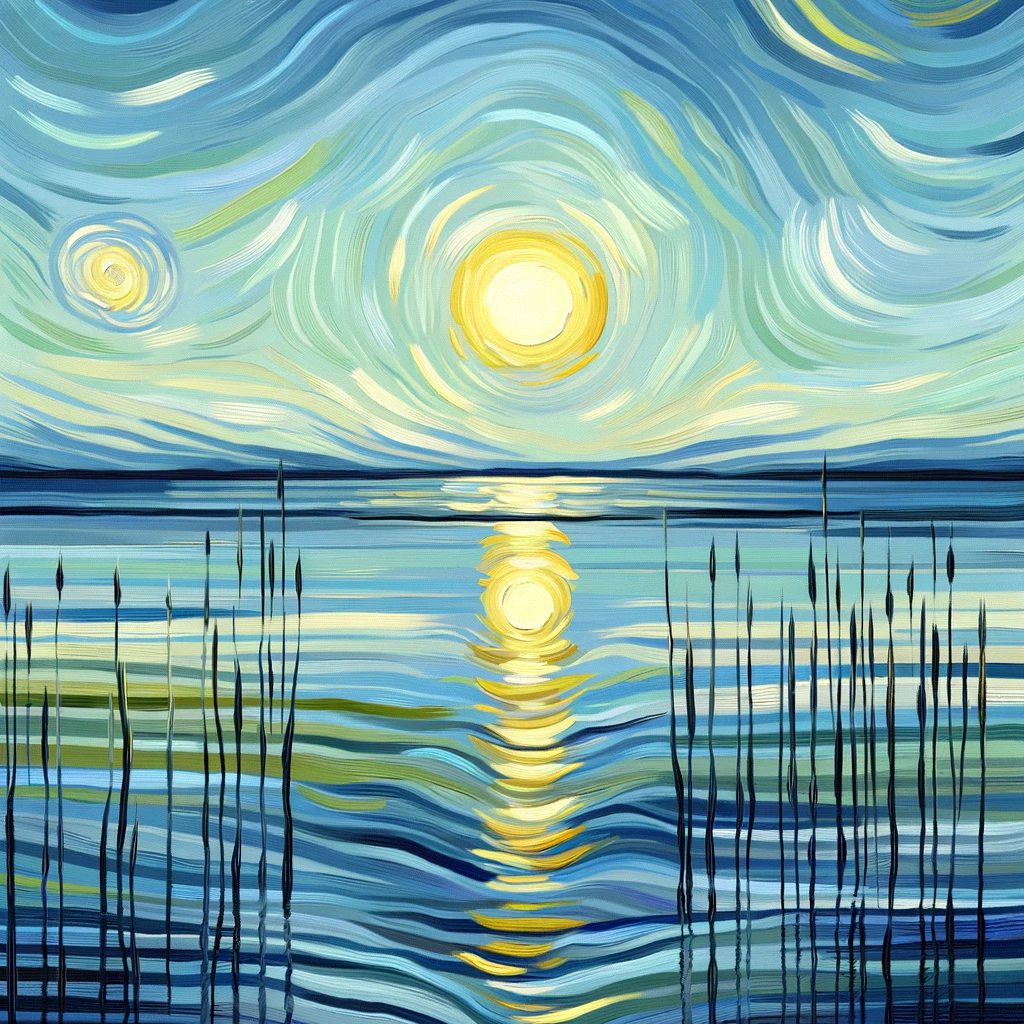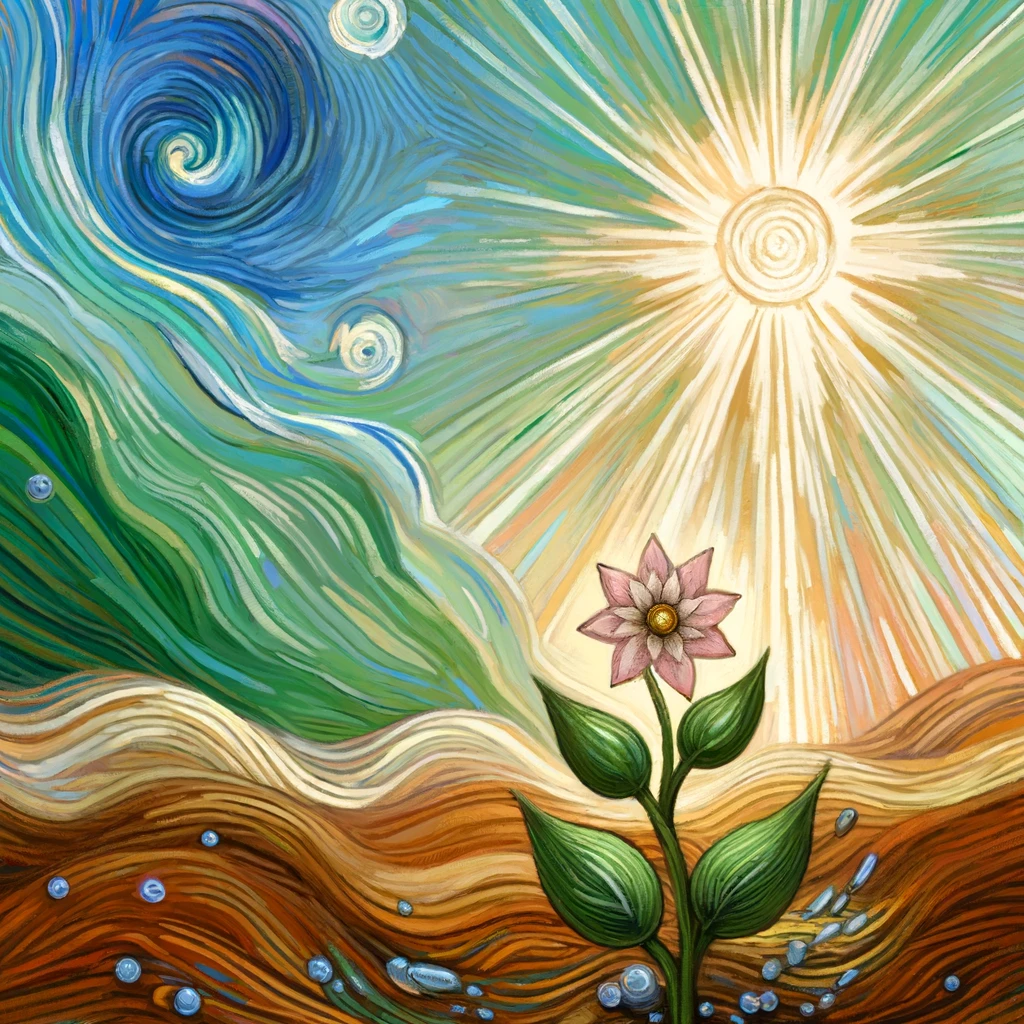In the year 2000, I was dedicating myself wholeheartedly to my career. I had recently been assigned by a United States-based employer to assist in launching their operations in Brazil. My responsibilities included establishing teams, developing processes for fieldwork, data collection, analysis, reporting, and presentations. This role placed me under immense pressure. To manage this stress, and later out of genuine passion, I began practising the DeRose Method.
Now, in 2024, after dedicating a quarter of a century to studying and training in this Method, I have been teaching it now for over 15 years. In this time, I have encountered a wealth of information and insights. While some of these were beneficial, others were rather questionable. In today’s era, dominated by search engine optimisation, artificial intelligence-generated content, and widespread disinformation, the situation has deteriorated further.
This is why I decided that it is time to consolidate my extensive experience and use it to create "The Ultimate Guide to Mindfulness for Beginners". This guide compiles everything I have learnt, practised, and taught about Mindfulness, organised into an accessible format:
- Section 1 introduces mindfulness,
- Section 2 discusses its core principle,
- Section 3 explores Mindfulness and the DeRose Method
- Section 4 guides you on how to commence your practice
- Section 5 addresses common challenges, and finally
- Section 6 outlines the next steps in your journey
This page is a companion page to my general page on Mindfulness. If this is too much detail, you are welcome to stay on this page. If you are ready for a deep dive, join me in the next section!
Section 1: Understanding Mindfulness
What is Mindfulness?
The best definition for mindfulness is “to be here, now”. Mindfulness is the skill to maintain your attention, your concentration, and your focus on everything you do.
When and where does it come from?
The term mindfulness was first used in the West in the 1970s with the objective of using this technique to help to manage stress. However, the origin of this concept is from over 5000 years ago and it was originally called dháraná.

Who is it for?
Everyone, from professionals seeking to perform better at their work to individuals striving to enrich their daily experiences, can benefit from this increased state of awareness, concentration and presence that mindfulness offers.
Why should I learn it?
While mindfulness can be used as a tool for managing stress or emotional challenges, it can also deliver so much more: making your experience of every moment you exist something remarkable and from which you can extract satisfaction.
What is NOT mindfulness? What is McMindfulness
McMindfulness, a sub standard, consumeristic version so often found everywhere online, muddling haphazardly elements from various traditions, that disrepute the profound practice of mindfulness into a marketable commodity with little regard for authenticity or quality. Often the only objective of this is to calm and relax the users and the marketing frequently confuses mindfulness with meditation or just claims that this is really a ‘mindfulness meditation’, a sure way to tell this is really just McMindfulness, the low quality, fast-food version. This is NOT mindfulness.
OK! Now that we have the basics out of the way it is time to go into more detail.
The Origins of Mindfulness
In the 1970s an American professor emeritus of medicine named Jon Kabat-Zinn was concerned with stress, so he founded the ‘Stress Reduction Clinic’ at the University of Massachusetts Medical School. When he was still a student he came into contact with many Eastern philosophies such as Zen Buddhism, different variants of modern Yôga and even Vêdantá – if you want to understand more about these terms, their relationships and the lengthy chronology of Eastern Philosophies become a member of our DeRose Amsterdam School. This led him to create the ‘Center for Mindfulness in Medicine, Health Care, and Society’, and thus the term “Mindfulness” was brought into the West.
As this Ultimate Guide to Mindfulness is really for Beginners I need to explain something about these Eastern Philosophies mentioned above. They have all originated in a remote past, in a civilisation which disappeared (academic consensus suggests that they were forcibly conquered and had many of their ideas, customs and insights adapted by their conquerors) around 1500 BCE. This civilisation occupied an area which today is the border between India and Pakistan, along the Valley of the Indus River and thus, archeologists have named them Indus Valley Civilisation (while also called Harrapan, after the name of a city or Dravidian, after an ethnicity). The concepts that originated in this civilisation were then adopted and altered through the centuries to form the foundation of Hinduism (which includes Yôga), Buddhism and many others.
Archeologists are yet to be able to decipher the language of this civilisation, but the very concept of what later became Mindfulness was originally called dháraná – which is a Sankrit term that means mental concentration.
Now that you know the term dháraná its meaning, I am going to use it in the text below, although to avoid undue repetition sometimes I am going to also refer to this concept as mindfulness.
At its very origin dháraná (or mindfulness) was a process of mental concentration which allowed the individual to enhance their experience of the very moment of existence. Mindfulness (which emerged millennia before Buddhism), was not intended for health improvement, even if such results do occur as a side effect. It is like saying that dance, martial arts, or sports have as their purpose weight loss – while they may achieve weight loss, as a side effect, their purpose is much deeper than this mere side effect.
Section 2: The Core Principle of Mindfulness

What is the core of mindfulness?
At its core, mindfulness is about shedding light into the darkness of mental automation which can make one feel like life has flown by before their eyes.
What is it not?
Simply put: mindfulness is NOT meditation. Instead, mindfulness (dháraná) is the necessary stage which prepares the individual for meditation (dhyána).
NEUROSCIENCE CONFIRMS
According to Doctor Renata Coura, a neuroscientist, who is also a Director of one of the DeRose Method schools in Paris, studies in the field show that 96% to 98% of our daily actions are performed automatically. We are living in a state of conditioned behaviour. In order to break this pattern, one must provide a different stimulus to the brain, exercising it just as we would the body, when performing any physical activity.
In order to break out of this interminable automation of life, mindfulness is the key.
The automation of the repetitive processes a person does is called conditioning. Conditioning is a necessary aspect of human existence. It is necessary because automation lowers the energy consumption of our brains and allows us to achieve more productivity.
Imagine if the process of walked was not automated – if every time you had to walk you had to work out, at great mental processing and energy consumption, how to shift your weight, how to move a leg forwards to prevent you from falling and then to move the other to continue the process, and eventually, how to stop. This is a reason why robotics and AI have such great difficulty with the simplest human processes. The very definition of becoming good at something, of mastery, is about training and repeating something until it becomes automatic. Without automation the ‘energetic cost’ would make living a prohibitive activity.
We do a lot of repetitive processes in our lives – for example, the tasks you do at work, or the cycles of day/night, weeks, months, seasons, years. As we experience this repetition our minds will strive to automate our lives in order to save energy.
However, an unintended consequence is as living becomes automatic we stop experiencing it fully, living becomes a background activity. If you feel that the year has flown by too quickly, it is likely that you have not lived each moment of your own life fully in this period. Your life is becoming a background activity.
If you do not wish to experience the feeling of time passing you by, all you need to do is to just pay attention. This is what, over 5000 years ago, the Indus Valley Civilisation had already worked out. They called the process of breaking out of this automation dháraná!
Mindfulness and Meditation
Since the introduction of the concept of mindfulness to the West in the 1970s there was a lot of confusion between it and meditation. Over time (and possibly due to lack of experts on these subjects in the West) these two techniques became even more muddled to an extent where today many people use these terms interchangeably.
In its inception, dháraná was the fundamental step to allow a practitioner to achieve a higher state of consciousness called dhyána, or meditation.
In other words, they are certainly not the same. Instead, they are unique steps required to achieve a higher state of consciousness. The purpose of mindfulness and meditation exercises is simply to avoid your rational mind, under the influence of emotions, interfering with your perception of reality, and to avoid it blocking the process of intuition, which is much more efficient than the mental process. The results are increased consciousness of daily life, to shine your consciousness on your habits, patterns, and decisions which are so automatic that they become invisible to us, most of the time.
When you are trained in and can experience dháraná you will be able to enjoy each moment you exist, to achieve high performance in your work, sports and life, in other words, to live a more complete and purposeful life.
Section 3: Mindfulness and the DeRose Method
What is the DeRose Method?
The DeRose Method is a process of training adults on how to live life in a less complicated way, how to improve wellbeing, performance and self-knowledge. We teach mindfulness, meditation, breathing techniques, concepts and much, much more!

Why should you learn mindfulness with DeRose?
While you will get excellence in mindfulness, we don’t teach it as an isolated practice, mindfulness is a part of a comprehensive system that encompasses physical well-being, emotional intelligence and mental clarity and much more. Our objective is to teach you to achieve your maximum potential and live your best life.
How can I get better at mindfulness?
The practice of mindfulness without any other techniques will take you only so far, when you add and combine other techniques such as good nutrition, intelligent physical techniques, breathing and more, you can reach even higher states.
Is there more beyond mindfulness?
As explained above, mindfulness is a step before meditation. If you would like to go beyond, my suggestion is that you become a DeRose Amsterdam member and explore all that the DeRose Method has to offer.
The DeRose Method
The DeRose Method is a system that teaches its students how to improve their performance at work and life, how to know yourself better, how to have the energy and vitality to achieve your dreams, and how to have a better quality of life. We achieve these incredible objectives by teaching the students techniques and concepts. The techniques are physical; you train them in a class so that you can improve your focus, strength, flexibility, your breathing, your self. The concepts are suggestions on how we can better understand the world around us, the way we manage the relationship with ourselves and others.
While this is a lofty proposal, the results speak for themselves. From its start in 1960, the DeRose Method origins trace back to most capitals of the world: Amsterdam, Buenos Aires, Barcelona, Lisbon, London, New York, Paris, Roma, Rio, and São Paulo. Over 20 thousand people, in twelve countries, practise this method.
DeRose (often I shorten our name, but don’t confuse this short version with Professor DeRose the individual) is composed of Techniques and Concepts that together teach you to get the most out of your life.
The Concepts of the DeRose Method deal with two very broad aspects: speculation and behaviour. Speculative Philosophy refers to a philosophical tradition that focuses on abstract, theoretical questions about the nature of reality, the universe, and our place in it. While Behavioural Philosophy, on the other hand, focuses on the study of human behaviour and its underlying motivations. This type of philosophy is concerned with practical questions about how people act, think, and feel, and seeks to understand the factors that influence human behaviour. I often summarise our concepts as: understanding our place in the universe (speculative) and how we manage the relationships with ourselves and others (behavioural).
If you would like to learn more about the concepts of the DeRose Method, read this article which dives into much more depth.
The Techniques of the DeRose Method are the elements we train with some certain frequency – at DeRose Amsterdam our members can train the techniques every day, in classes that can be 25 minutes long or 55 minutes long. Among the Techniques we teach are breathing, meditation, intelligent physical techniques and much more.
If you want to learn more about our techniques read this article which is more detailed on the subject.
This guide would become a book if we were to explore how all the techniques interact and the impact that this has on your experience with mindfulness. So our recommendation is that you contact DeRose Amsterdam and sign up for a free trial today.
DeRose Mindfulness
Mental concentration, dháraná, mindfulness, is amazing for many reasons and can produce amazing effects. However it is important to temper expectations. It is a skill, therefore you can experience mindfulness training and become better and better at executing this technique whenever you want. It is something you learn, train and perfect to have as a skill you can use at any moment you wish in your life.
- When your mind is concentrated you are more productive.
- When your mind is concentrated you can gain perspective.
- When your mind is concentrated you can take a break from the daily noise, distractions and mental pollution of modern living acting like a reset.
The DeRose approach is to teach its students how to do the technique, train them on the execution and focus on how this technique can make all of life better.
Section 4: Getting Started with Mindfulness Practice

How do I get started?
The practise of mindfulness consists in connecting deeply with your five senses and in the process attain a high level of mental concentration on this task. There are many exercises to help us to achieve this state which we teach to our members.
How do I know it is working?
A state of mental concentration is one in which the individual is aware of themselves and of the moment they exist. If in your practise you experience a sense of wellbeing this is a great first sign of success.
How can I be successful in applying mindfulness to my life?
There is no simple way, you need to train to be good at it: discipline and consistency. Once you start to get used to concentrating at will you will begin to notice even mundane things more – effectively you will be increasing your subjective longevity.
Getting started with mindfulness
Professor DeRose once wrote this passage below:
Before I started writing, I turned off my phone, I closed all the apps on my computer, I closed my eyes and started to observe my breathing, my emotions, and my state of mind. I prepared myself for the task of writing. I did all this so I could be fully present, without distractions, and make best use of my limited time. Although it may seem like I was doing a meditation technique, I did not do those actions above with the intent of meditating, nor reducing stress.
DeRose Method students, experienced or beginners, can do the above actions to apply mindfulness practically in their lives. However, once trained in the DeRose Method, the practitioner can simply do a breathing cycle to enter this mental state, to be really present and to be able to achieve this state under any circumstances.
This seems like a great tip for all of us to get started with our training for beginners. So follow each step below to get started on your own training:
- Get rid of distractions – put your phone away, turn on ‘do not disturb’, turn off any background sounds or TV or anything else. The place where you decide to do your training will impact your performance, so make sure that you can be left alone for a few moments and that you can dedicate yourself to the training.
- Get comfortable – there are a few positions which can enhance the experience, but especially in the beginning it is important to prioritise comfort. Later, as you get trained in the DeRose Method’s techniques and start to experience more strength, flexibility and vitality you will find our suggested positions so comfortable that you could stay in them for hours. But, as a beginner, you want to avoid having your attention taken away from the training due to discomfort.
- The ideal position is sitting down on the ground, with your legs crossed and your hands resting on your knees. However, if you feel that after a moment your body will start to demand your attention and prevent you from succeeding in concentration, then prioritise your comfort.
- If you can avoid laying down, it is very easy to fall asleep when laying down and some people may experience this side effect during their training.
- You are welcome to sit at a chair, sofa or similar. Aim to keep your back straight if possible, but again, your muscles may get tired so rest your back if you want.
- Get started – just as in Professor DeRose’s example above, start by:
- Closing your eyes. When you close your eyes we can further limit distractions and it becomes easier to observe yourself.
- Slow down your breathing. Using exclusively your nostrils, inhale and exhale slowly and deeply. Try to take the deepest breaths you can as slowly as you can. As you slow your breathing, begin to observe yourself in more detail.
- Make note of your emotions. Emotions are, by their very nature, momentary. So make note of how you feel and be aware that the next moment your emotions will shift. By sitting down and training you are in fact giving yourself the present of the present. So accept this gift and even allow a gentle smile to settle in. You will find much better results when you are truly smiling.
- Begin to concentrate. Our minds are busy by nature. We are always seeking novelty and distractions. However, at this moment you will aim to concentrate on your breathing, on your emotions. Thoughts and distractions will arrive suddenly, let them keep their momentum and just as quickly as they arrived let them leave. Bring your attention back to your breathing or to your emotions and keep your attention there. Once you concentrate, you are doing dháraná!
- Avoid getting tired. After a minute or two, complete the technique. It is better to finish early than reaching a saturation point where your mind will no longer desire to train. When you limit the time of training you can continue to train daily or even twice, in the morning and evening, accelerating your progress.
Now that we have the foundation of the first training, where do we go? We train more. We maintain the training until it is so easy for you to achieve this mental concentration that you “can simply do a breathing cycle to enter this mental state”.
When you are at this stage you will notice that you naturally long for this state of mental concentration and quiet and that you begin to experiment with this concentration during all activities of your life. You may experiment by entering this state when you are brushing your teeth, cooking, eating, working, in meetings, even when you are with your friends or partner. The intensity of the moment increases and every moment you live becomes more remarkable.
Now, even as I write these words I can feel some readers being incredulous. I agree. Do not believe me. Instead of believing me, try it for yourself. My words are not good enough to be substitutes to a real personal experience. This was also true for me when I began my journey too.
Section 5: Overcoming Common Challenges
Difficulties? What Difficulties?
While the technique of dháraná may seem simple, most people have spent their lives doing just the opposite. That is ok. That is why we train. If you face difficulties, find a good teacher (really, my best suggestion is to become a DeRose Amsterdam member!)

No path is without obstacles
As we have seen in the previous section, obstacles and difficulties do exist. After all, we need to train the mind to stay in a state where it is straining, where it is using up more energy and our organism does not really enjoy this state. The mind feeds on variety. It demands fun, distraction, diversion, and digression. This is why novelty sells. This is also why, when we are studying or working for a long time, our mind demands a break so it can be distracted by something. And if we do give it this break, the mind will function much better once it returns to the activity that it had focused on.
However, with training the results will naturally flow and you may even surprise yourself that you had tried this before.
So here are 4 tips which you should keep in mind:
- Care for your body offering it good nutrition, intelligent physical techniques, and organic purification activities;
- Care for your behaviours – we should cultivate good human relations, in addition to practising breathing, relaxation, and emotional reprogramming, among other elements, all present in the structure of the DeRose Method.
- Find a good, qualified teacher. Many people think that they understand everything because they read a blog post or a book. The truth is that practical experience is fundamental here as so much of the technique takes place within. Qualified DeRose Method teachers would be my recommendation.
- It is better to start easy. When training your mind it is best to avoid fatigue. If you deny the mind its compulsive diversions, it will react like a child (which it is). At first, it will throw a tantrum, it will kick and scream. It will demand that the exercise is stopped, that it wants to leave, that it wants to be distracted by thinking about something else, that it does not want to be doing this anymore. Anything but this! But then, little by little, the mind gains discipline. It begins to derive a very special satisfaction from spending a few quiet moments every day giving time to itself.
The unexpected benefit!
Earlier in this Ultimate Guide to Mindfulness for Beginners we discussed how mindfulness is a mandatory first step for achieving a higher state of consciousness, dhyána (meditation). As you train and get better and better at dháraná you will now be much closer to succeeding in meditating. If you want to learn more about this, we are compiling a guide for meditation too!
Section 6: Next Steps on Your Mindfulness Journey
Since 2008, when I first graduated as a DeRose teacher my passion has been to participate in the growth, development and evolution of my students. Now it is your turn. Take the teachings, the knowledge, the insights contained here and make them your own by using them, training them and enjoying the benefits in your own life. Learn. Train. Maintain your discipline and consistency in your training. Use your newfound ability in everything you do in life.

So what next step could you take?
My ideal and recommended first step is to sign up for a free trial with DeRose Amsterdam. In this trial you will experience all you have learned here and way more, in a customised, personalised and fun way. You will meet like minded people. You will meet our teachers and have all the benefits of being a full member of DeRose Amsterdam. For free.
But maybe a membership is not for you. In this case, you can sign up for our newsletter where we will share only the most relevant information and never spam you. You will learn from our new content and be informed when there will be new Mindfulness Courses and more!
We look forward to connecting with you!

Fabs Martins
Like what you are reading?
Sign up for our newsletter and get only the most important information.
Do you want to learn this and more? Then sign up for a free trial now!